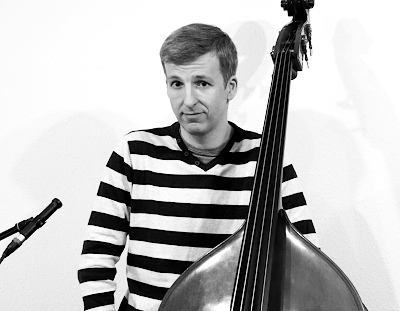Willkommen ...!
Ich schätze sowohl die Schlichtheit eines Songs (gutes Songwriting, gute Texte) als auch die Komplexität von Kompositionen des modernen Jazz.
Neben meiner Arbeit als (Multi-)Instrumentalist liegen mit das Unterrichten sowie die kreative Arbeit im Tonstudio (Arrangieren, Aufnehmen, Mischen und Mastering von Musik) am Herzen.
Welcome ...!
I'm afraid this website is mostly in German but feel free to contact me. However, you can find some information in English if you browse through this website. I added English comments where I found it useful.
Please have a look at my video section!
Maria durch ein’ Dornwald ging
Mein musikalischer Weihnachtsgruß 2016: “Maria durch ein’ Dornwald ging”, ein altes Adventlied aus dem 19. Jahrhundert, ursprünglich vermutlich viel älter und eigentlich ein Hymnus des Pilgerns.
Ich habe das Lied für E-Bass und Loop Station arrangiert. Analoge Effekte kommen ebenfalls zum Einsatz. Keine Studio-Tricks, alles, was man hört, wurde live so gespielt!
Viel Freude damit!
“Maria Walks Amid the Thorn”, a traditional German Advent hymn (actually an old pigrimage song), arranged for bass and played by Tim Teissen.
This jazz-like version features live looping, an improvisation, and an uncommon time signature (a 15/4 cycle).
Season’s greetings and best wishes for the New Year!
The Power of Konnakol (5): Practising four-note groups
In part 5 of my series on Konnakol, we’re going to practise four-note groups on several subdivision levels. This includes polyrhythms like 3 over 4, and 5 over 4. Exercise #7 shows how to do it, and how to make your own patterns sound quite polyrhythmic. Enjoy!
topics: rhythm, konnakol, subdivisions, polyrhythms
Level: advanced
Instruments: for all instruments
Duration: approx. 8:30 min
Extras/Download: Additional exercise – for electric bass only
For a list of all my video lessons go here.
You could also use the tag cloud (in the footer area of this website) in order to look for video lessons.
All German-speaking viewers may have a look at my translation page.
The Power of Konnakol (4): Practising three-note groups
In part 4 of my series, we’re going to practise three-note groups on several subdivision levels. This video lesson is also about controlling polyrhythmic structures (e.g. 4 over 3, or 5 over 3). It includes an exercise in two versions. Personally I like how the latter of the two sounds. Enjoy!
topics: rhythm, konnakol, subdivisions, polyrhythms
Level: advanced
Instruments: for all instruments
Duration: approx. 7 min
Extras/Download: Additional exercise – for electric bass only
For a list of all my video lessons go here.
You could also use the tag cloud (in the footer area of this website) in order to look for video lessons.
All German-speaking viewers may have a look at my translation page.



